If you’re considering getting a Kuhli Loach, you’re in for a treat. These small, eel-like fish are fascinating creatures to watch and can make great additions to your aquarium. However, they do require specific care to thrive, so it’s important to do your research before bringing them home.
Kuhli loaches require a well-maintained aquarium with suitable water conditions, a varied diet, and a peaceful environment. They need a pH range of 6.0-7.5 and a temperature range between 75-86°F. The aquarium should be decorated with hiding places, and regular water changes should be performed to ensure their health. They are social and active fish, making them an excellent choice for community tanks.
In this article, I’ll share everything you need to know about Kuhli Loach care, from their natural habitat and behavior to tank setup and feeding. I’ve been keeping Kuhli Loaches for several years now, and I’ve learned a lot about their unique needs and quirks. Whether you’re a beginner or an experienced fish keeper, I hope you’ll find this guide helpful in providing the best possible care for your Kuhli Loaches.
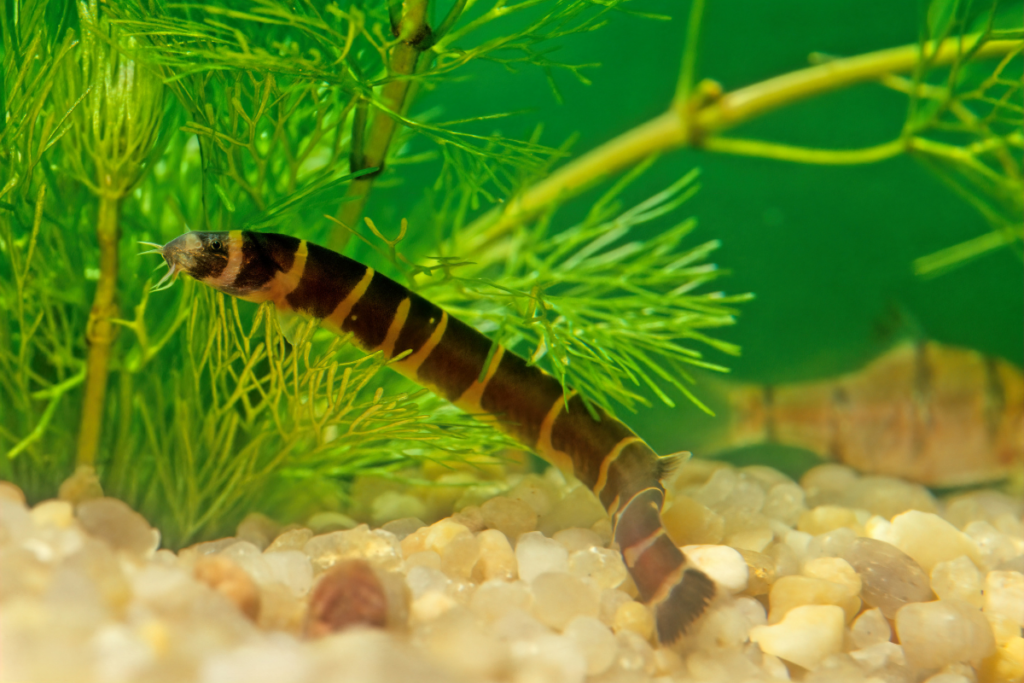
Table of Contents
Species Summary
Origin
The Kuhli Loach, also known as the Coolie Loach, comes from the rivers of Southeast Asia, specifically from Indonesia, Malaysia, and Thailand.
These fish are found in slow-moving streams and rivers with sandy or muddy bottoms.
Lifespan
The Kuhli Loach has a relatively long lifespan, living up to 10 years when kept in optimal conditions.
Appearance
The Kuhli Loach has a slender, eel-like body with a pointed head and small barbels around its mouth. Its coloration can vary from a yellowish-brown to a dark brown with horizontal stripes running along its body.
Size
The Kuhli Loach is a small fish, growing up to 3-4 inches in length.
Growth rate
The Kuhli Loach is a slow-growing fish and can take up to a year to reach its full size.
Behavior & Temperament
Kuhli Loaches are peaceful and social fish that prefer to live in groups of at least 6.
They are nocturnal and spend most of their day hiding in caves, plants, or other hiding places. They are active at night and enjoy scavenging for food.
Male vs Female
It is difficult to differentiate between male and female Kuhli Loaches. However, during breeding season, females may appear slightly plumper than males.
Overall, Kuhli Loaches are fascinating fish to keep and observe. I have personally kept a group of these fish in my aquarium for several years and have enjoyed watching their playful and curious behavior.
If you are considering adding Kuhli Loaches to your aquarium, make sure to provide them with plenty of hiding places and a sandy or muddy substrate to mimic their natural habitat.
Tank Setup
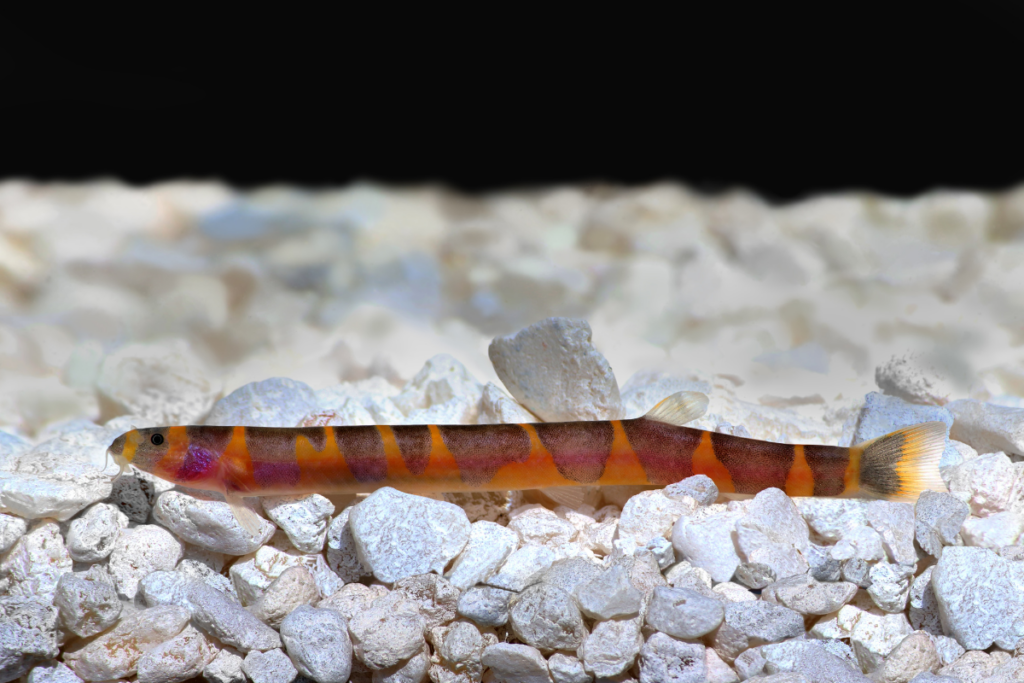
Setting up a tank for your Kuhli Loach is crucial to ensuring their health and happiness. Here are some important factors to consider:
Tank Size
The minimum tank size for Kuhli Loaches is 20 gallons. However, if you plan on keeping multiple Kuhli Loaches, a larger tank is recommended.
I personally keep my Kuhli Loaches in a 40-gallon tank and they seem to thrive in the extra space.
Lighting
Kuhli Loaches prefer dimly lit environments, so it’s important to choose lighting that won’t stress them out. Consider using a low-wattage bulb or a timer to simulate natural daylight cycles.
Filtration
Proper filtration is essential for maintaining a healthy tank environment. A good rule of thumb is to choose a filter that can handle at least twice the volume of your tank.
I use a canister filter with a flow rate of 200 gallons per hour for my 40-gallon tank.
Aeration
Kuhli Loaches require well-oxygenated water, so it’s important to provide adequate aeration. A simple air stone or bubbler can help increase oxygen levels in the tank.
Heater
Kuhli Loaches are tropical fish and require a consistent water temperature between 75-86°F. A reliable heater is necessary to maintain a stable temperature in the tank.
Substrate
Kuhli Loaches love to burrow, so a soft substrate like sand or fine gravel is recommended. Avoid sharp or rough substrates that could harm their delicate bodies.
Plants and Decorations
Kuhli Loaches enjoy having plenty of hiding spots and places to explore. Live plants like Java fern and Anubias can provide both cover and oxygenation.
Decorations like caves, driftwood, and rocks can also create interesting spaces for your Kuhli Loaches to explore.
Water Requirements
Temperature
I keep my Kuhli Loaches in a tropical aquarium with a temperature range of 75-82°F (24-28°C).
It’s important to maintain a consistent temperature, as sudden changes can cause stress and illness in these sensitive fish.
pH Level
Kuhli Loaches prefer slightly acidic to neutral water, with a pH range of 6.0-7.5. I recommend testing your water regularly and making adjustments as needed using a pH buffer.
Water Hardness
These fish prefer soft to moderately hard water, with a range of 5-12 dGH. I personally use a mix of tap and RO water to achieve the ideal hardness level for my Kuhli Loaches.
Water Changes
Regular water changes are crucial for the health of your Kuhli Loaches.
I recommend changing 10-20% of the water weekly, using a gravel vacuum to remove any debris or uneaten food from the substrate.
It’s important to note that Kuhli Loaches are sensitive to chlorine and chloramine, so be sure to use a water conditioner that removes these chemicals before adding new water to the tank.
By maintaining proper water conditions, you can ensure the health and happiness of your Kuhli Loaches.
Feeding
Feeding your Kuhli Loach is an important aspect of their care. Here are some things to keep in mind when it comes to feeding your loach.
Diet
Kuhli Loaches are omnivores, which means they eat both meat and plants. In the wild, they eat small insects, worms, and crustaceans. In captivity, they can be fed a variety of foods, including:
- Live or frozen brine shrimp
- Daphnia
- Bloodworms
- Tubifex worms
- Commercially-prepared sinking pellets or flakes
It’s important to vary their diet to ensure they get all the necessary nutrients. I like to give my Kuhli Loaches a mix of live and frozen foods, as well as some sinking pellets.
Feeding Schedule
Kuhli Loaches should be fed once or twice a day, depending on their age and size. Younger loaches may need to be fed more frequently, while adult loaches can be fed once a day.
It’s important not to overfeed them, as this can lead to health problems.
Feeding Tips
Here are some tips to keep in mind when feeding your Kuhli Loaches:
- Feed them in the evening or at night, as this is when they are most active.
- Only feed them what they can eat in a few minutes.
- Remove any uneaten food after feeding to prevent it from fouling the water.
- Use a feeding dish or target feeding to ensure they get their fair share of food.
Personally, I like to use a feeding dish to make sure all my Kuhli Loaches get enough food. I also like to watch them eat, as they are quite entertaining to watch!
Behavior and Compatibility
Schooling
I have found that Kuhli Loaches are happiest when kept in groups of at least six individuals.
They are social creatures that enjoy the company of their own kind, and will often be seen swimming together or hiding in the same spot. Keeping them in smaller groups can lead to stress and aggression.
How Many Kuhli Loaches Should be Kept Together
It is important to make sure that you have enough space in your tank to accommodate the number of Kuhli Loaches you plan to keep.
As a general rule, you should have at least 10 gallons of water per Kuhli Loach. This means that a group of six Kuhli Loaches would require a minimum of a 60-gallon tank.
Compatibility with Other Fish
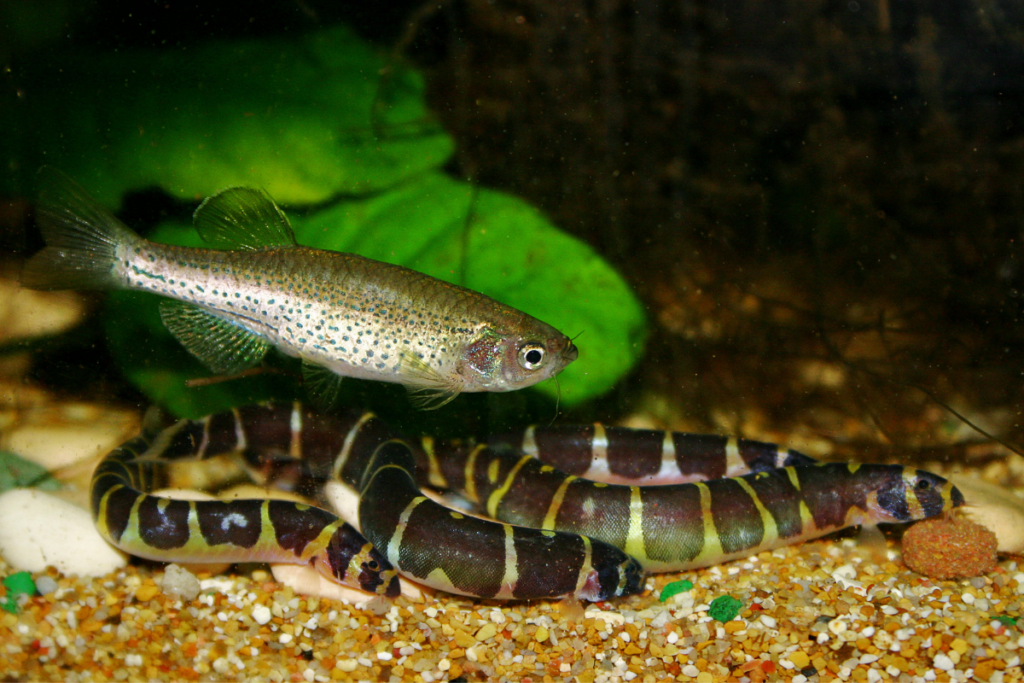
Kuhli Loaches are generally peaceful and can be kept with a variety of other fish species.
However, it is important to choose tankmates that are not aggressive and will not bully or harass the Kuhli Loaches.
Good tankmates for Kuhli Loaches include other peaceful community fish such as tetras, guppies, and corydoras.
Aggression and Territoriality
While Kuhli Loaches are generally peaceful, they can become territorial and aggressive if they feel threatened or stressed.
It is important to provide plenty of hiding spots and cover in the tank to help reduce stress and aggression.
Additionally, make sure to avoid keeping Kuhli Loaches with larger, more aggressive fish species that may view them as prey.
Overall, Kuhli Loaches are fascinating and enjoyable fish to keep. By providing them with a suitable environment and compatible tankmates, you can ensure that they thrive and display their full range of interesting behaviors.
Personally, I have found that Kuhli Loaches are some of the most entertaining fish to watch in my tank.
Their playful behavior and unique appearance make them a standout addition to any aquarium.
Health and Disease
Common Health Issues
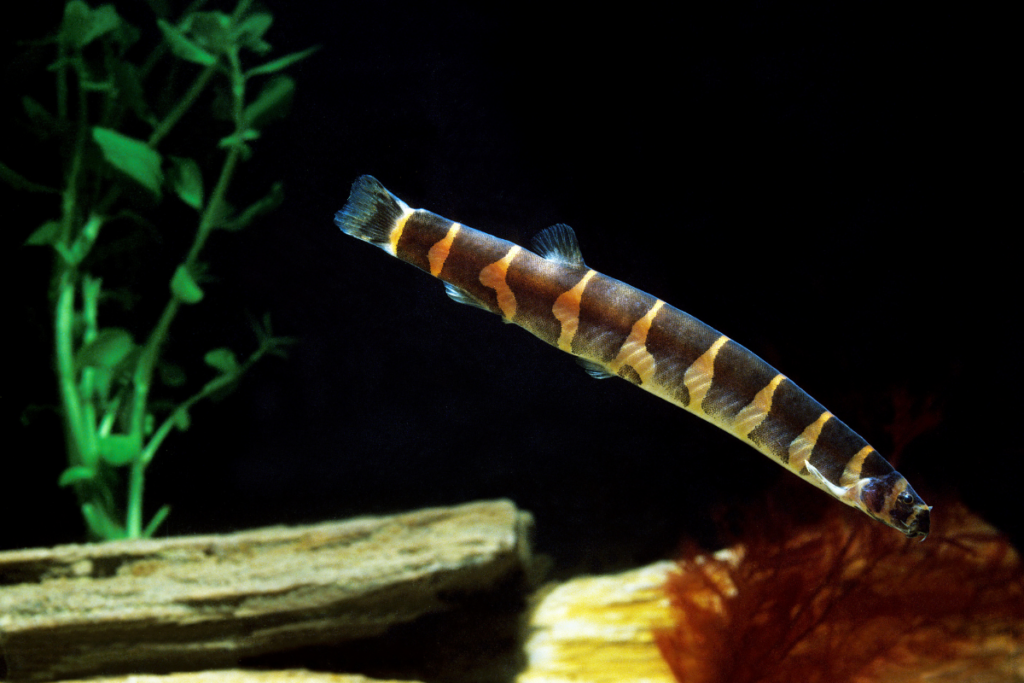
I have been keeping Kuhli Loaches for over five years, and I have learned that they are hardy fish that can tolerate a wide range of water conditions.
However, like all fish, they are susceptible to certain health issues. One of the most common problems is Ich, a parasitic disease that causes white spots on the fish’s body.
Other common health issues include bacterial infections, fungal infections, and swim bladder disease.
If you notice any of these symptoms, it is essential to act quickly. The longer you wait, the harder it will be to treat the disease.
You can prevent many health issues by maintaining good water quality, feeding a balanced diet, and avoiding overcrowding.
Prevention and Treatment
The best way to prevent health issues in Kuhli Loaches is to provide them with a clean and healthy environment.
This means keeping the water clean and well-oxygenated, providing a varied and balanced diet, and avoiding overcrowding.
If you notice any signs of illness, it is important to act quickly. The first step is to isolate the sick fish in a separate tank to prevent the spread of disease.
There are many treatments available for common health issues in Kuhli Loaches. For Ich, you can use medications such as malachite green or copper sulfate.
For bacterial infections, antibiotics such as erythromycin or tetracycline can be effective. Fungal infections can be treated with antifungal medications such as methylene blue or potassium permanganate.
Swim bladder disease can be caused by a variety of factors, including overfeeding or constipation. In mild cases, fasting the fish for a few days can help.
In more severe cases, you may need to treat the fish with antibiotics or other medications.
Remember, prevention is always better than cure. By providing your Kuhli Loaches with a healthy environment and a balanced diet, you can help them stay healthy and happy for years to come.
Signs of a Healthy Kuhli Loach
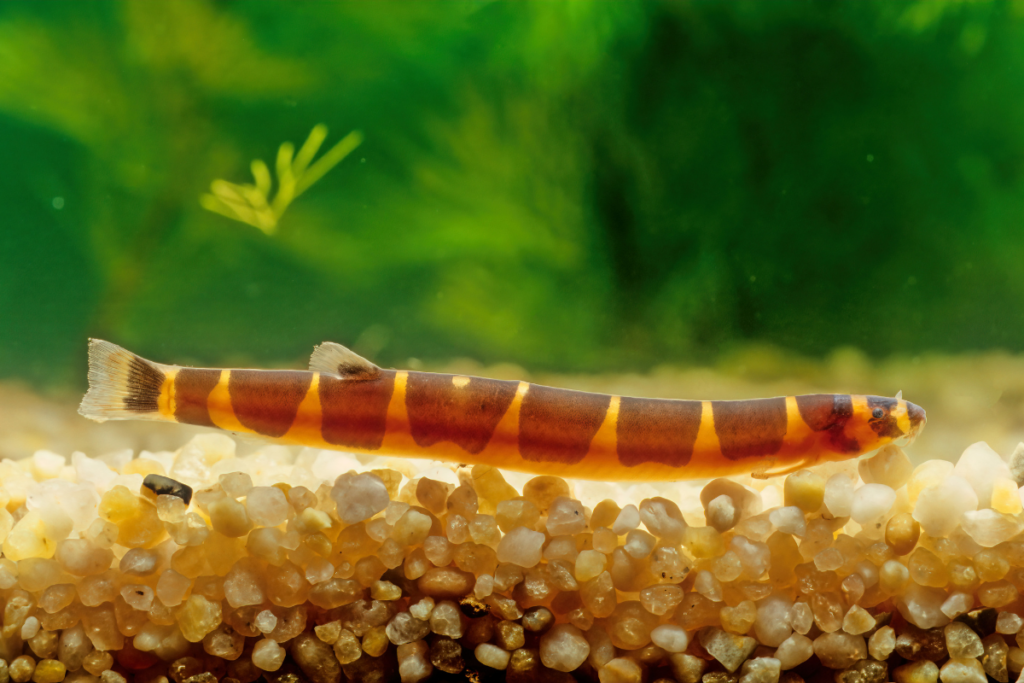
As a Kuhli Loach owner, it is important to know how to identify signs of a healthy fish. Here are some of the things that I look for:
- Active and Energetic: When I approach my aquarium, I want to see my Kuhli Loaches swimming around, exploring their environment, and being active. If they are hiding or lethargic, it might be a sign that something is wrong.
- Clear Eyes: The eyes of a healthy Kuhli Loach should be clear and bright. If you notice any cloudiness or discoloration, it could be a sign of an infection or disease.
- Smooth Scales: A healthy Kuhli Loach will have smooth, shiny scales. If you see any rough patches or discoloration, it could be a sign of a skin infection or parasite.
- Healthy Appetite: Kuhli Loaches are known for their voracious appetites, so if you notice that your fish is not eating, it could be a sign of illness or stress.
Overall, it is important to observe your Kuhli Loaches regularly and get to know their behavior and habits. This will help you identify any changes or abnormalities early on, and take action to keep your fish healthy and happy.
Personally, I always keep a close eye on my Kuhli Loaches and make sure to monitor their behavior and appearance. One time, I noticed that one of my Kuhli Loaches was not eating and seemed to be hiding more than usual.
I was concerned and did some research, and it turned out that he had a minor infection that was easily treatable with some medication and a few changes to the aquarium environment.
By catching the problem early, I was able to help my fish recover quickly and avoid any serious health issues.
Signs of a Sick Kuhli Loach
As a Kuhli Loach owner, it is important to know the signs of a sick fish so that you can take action quickly. Here are some common signs to look out for:
- Loss of appetite: If your Kuhli Loach is not eating, it may be a sign of illness.
- Difficulty swimming: If your Kuhli Loach is having trouble swimming or is swimming erratically, it may be a sign of a swim bladder issue or other health problem.
- Visible signs of illness: Look for physical signs such as discoloration, sores, or unusual growths on the fish’s body.
- Gasping for air: If your Kuhli Loach is gasping for air at the surface of the water, it may be a sign of poor water quality or a respiratory issue.
If you notice any of these signs, it is important to take action quickly. I once had a Kuhli Loach that stopped eating and became lethargic.
After doing some research, I discovered that it was likely suffering from a bacterial infection. I immediately quarantined the fish and treated it with antibiotics, and it made a full recovery.
Remember, the key to keeping your Kuhli Loach healthy is to be observant and proactive. By keeping an eye out for signs of illness and taking action quickly, you can help ensure that your fish live long and happy lives.
Breeding Kuhli Loach
Breeding Setup
I have found that breeding Kuhli Loach can be a bit challenging, but it is definitely doable with the right setup. To start, you will need a breeding tank that is at least 10 gallons in size.
The tank should be heavily planted with fine-leaved plants like Java moss or Cabomba, which will provide hiding places for the loaches and their eggs.
You should also provide a spawning mop, which is a bunch of yarn or other material tied together in a ball. The loaches will lay their eggs on the mop, and you can easily remove it from the tank to transfer the eggs to a separate rearing tank.
Breeding Process
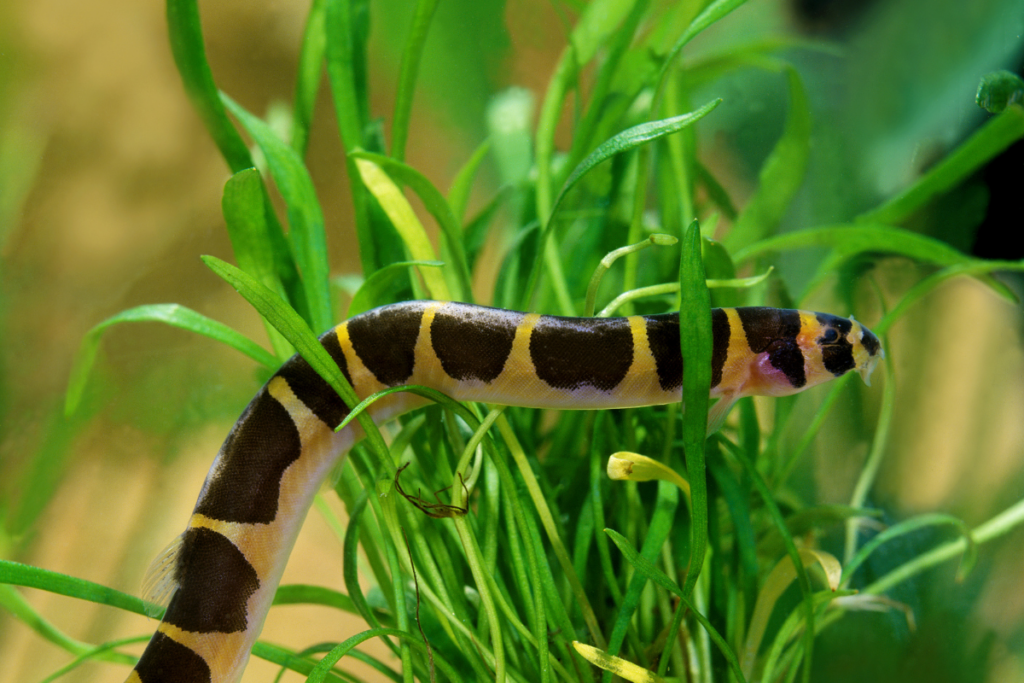
Once you have the breeding tank set up, you will need to introduce a male and female Kuhli Loach.
The male will begin to chase the female around the tank, and eventually, they will spawn on the spawning mop.
The eggs will hatch in about 24-48 hours, and the fry will be free-swimming in another 24 hours.
It is important to remove the spawning mop from the tank as soon as the eggs are laid to prevent the adults from eating them.
You can transfer the mop to a separate rearing tank or use a pipette to carefully remove the eggs and transfer them to a different container.
Raising Fry
Once the fry are free-swimming, you will need to feed them small amounts of freshly hatched brine shrimp or microworms several times a day.
It is important to keep the water clean and well-oxygenated, and to perform frequent water changes to prevent ammonia buildup.
As the fry grow, you can gradually introduce them to other foods like crushed flakes or pellets.
It will take several months for the fry to reach maturity and begin to breed themselves, but with patience and care, you can successfully breed Kuhli Loach in your own aquarium.
Personally, I have found breeding Kuhli Loach to be a rewarding experience. It takes time and effort, but the end result is a tank full of adorable baby loaches that will eventually grow into healthy adults.
Recommended Products:
- Aqueon QuietFlow LED PRO Aquarium Power Filter – This filter provides excellent mechanical and biological filtration and is suitable for tanks up to 75 gallons.
- NICREW ClassicLED Aquarium Light – This LED light provides low to moderate lighting, which is ideal for Kuhli Loaches. It also has customizable color options to enhance the beauty of your tank.
- Tetra Whisper Air Pump – This air pump provides additional aeration for your tank, ensuring your Kuhli Loaches have plenty of oxygen to thrive.
- Eheim Jager Aquarium Thermostat Heater – This high-quality heater is adjustable and can maintain a consistent temperature in your tank.
- CaribSea Super Naturals Sand – This sand is gentle on your fish’s delicate skin and is easy to clean.
- Java Fern – This live plant can provide additional hiding places and cover for your Kuhli Loaches.
- API Aquarium Test Kit – This water test kit can help you monitor pH levels and water hardness.
- Fluval Spec III Aquarium Kit – This 2.6-gallon aquarium kit is perfect for a single Kuhli Loach.
- Omega One Freeze Dried Bloodworms – This food can be fed to Kuhli Loaches as part of their omnivorous diet.
- Seachem Prime – This water conditioner can help improve water quality and reduce stress in your fish.
Conclusion
After owning Kuhli Loaches for several years, I can confidently say that they are a great addition to any aquarium. They are easy to care for and provide hours of entertainment with their playful behavior.
Remember to provide a well-planted tank with plenty of hiding spots and a sandy substrate. Feed them a variety of foods, including live and frozen options, to ensure they receive a balanced diet. Keep the water clean and maintain proper water parameters to prevent any health issues.
If you are considering adding Kuhli Loaches to your aquarium, I highly recommend it. They are a unique and interesting fish that will bring joy to any fish enthusiast.
FAQs
As a Kuhli Loach owner, you may have some questions about how to care for your fish. Here are some frequently asked questions that I have come across:
Q: What is the ideal tank size for Kuhli Loaches?
A: Kuhli Loaches are social fish and require a minimum of 20 gallons for a small group of 5-6 fish. However, a larger tank of 40 gallons or more is recommended for a larger group of 10 or more fish. Keep in mind that the more space your Kuhli Loaches have, the happier and healthier they will be.
Q: What should I feed my Kuhli Loaches?
A: Kuhli Loaches are omnivores and will eat a variety of foods. They enjoy live or frozen foods such as bloodworms, brine shrimp, and daphnia. They also like sinking pellets and flakes. It’s important to provide a balanced diet and not overfeed your fish.
Q: Do Kuhli Loaches need a heater?
A: Yes, Kuhli Loaches are tropical fish and require a water temperature between 75-82°F. A heater is necessary to maintain a consistent temperature in their tank.
Q: Can Kuhli Loaches live with other fish?
A: Yes, Kuhli Loaches are peaceful fish and can live with other peaceful fish that are not aggressive or territorial. Some good tank mates for Kuhli Loaches include tetras, guppies, and corydoras.
Overall, Kuhli Loaches are a great addition to any aquarium. With proper care and attention, they can live for up to 10 years. If you have any other questions or concerns, don’t hesitate to ask your local fish store or aquarium enthusiast.
Reference: Wikipedia.
